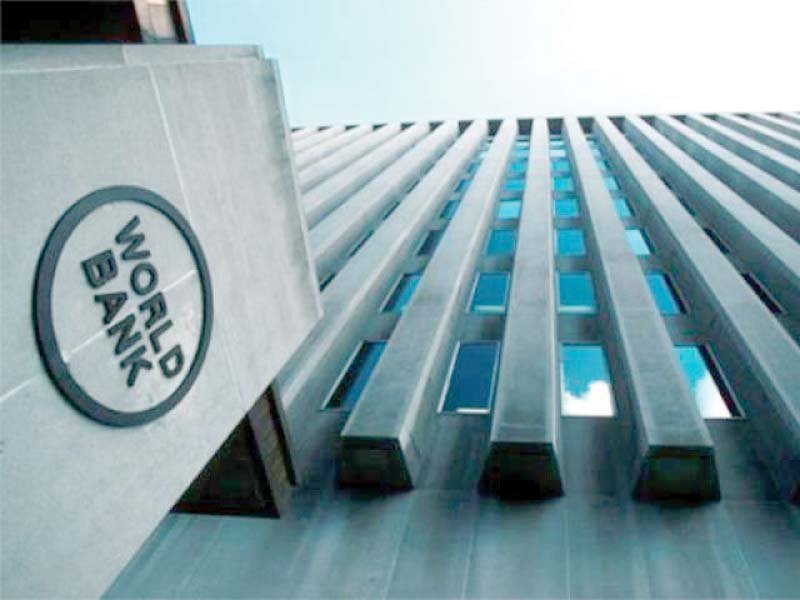
ISLAMABAD: Pakistan’s efforts to consolidate its budget deficit may be derailed due to weak tax revenues and expenditure slippages ahead of upcoming general elections, the World Bank warned on Wednesday.
In its Global Economic Prospects Report, the Washington-based lender said increasing contingent liabilities related to infrastructure projects could become another reason for a higher budget deficit.
Against the parliament-approved budget deficit target of Rs1.479 trillion or 4.1% of gross domestic product (GDP), the finance ministry has already provisionally booked Rs826 billion or 2.3% as budget deficit in just five months of the ongoing fiscal year. This suggests that the annual budget deficit target is highly likely to be missed, showing weak planning.
“Increasing contingent liabilities related to infrastructure projects in Pakistan and slippages relating to upcoming elections and weak tax revenues could derail fiscal consolidation efforts,” noted the World Bank.
The Federal Board of Revenue’s (FBR) tax collection during the first half of the fiscal year stood at Rs1.722 trillion - Rs89 billion below the half-year target. This suggests that the FBR will not be able to achieve its annual target of Rs4.013 trillion despite levy of regulatory duties and depreciation of the rupee that provides a windfall gain of Rs55 billion, according to tax officials.
Similarly, the PML-N government has also doled out Rs54 billion for parliamentarians’ schemes during the first five and a half months of the current fiscal year, indicating that the World Bank’s concerns regarding election-related spending have merit.
Circular debt issue
Pakistan had closed the last fiscal year with a budget deficit of 5.8% of GDP, excluding the amount of circular debt that the government is reluctant to repay due to its implications for the budget.
After including circular debt, the budget deficit would rise close to 8% of GDP, said Senator Saleem Mandviwalla, Chairman of the Senate Standing Committee on Finance on Tuesday.
In the same meeting, Debt Management Office Director General Ehtisham Rashid stated that the inclusion of circular debt would increase the overall budget deficit by another 1.5% to 1.75% of GDP. But he hastily added that so far no such payments have been made.
In November last year, the World Bank had also said that the public debt path can be sensitive to the materialisation of contingent liabilities. These liabilities can originate from loss-making public sector enterprises (PSEs) and take the form of absorption of outstanding power sector circular debt.
The World Bank said that economic activity in the first half of this fiscal year (July-December) has continued to expand, driven by robust domestic demand supported by strong credit growth and investment projects related to the China-Pakistan Economic Corridor (CPEC).
But its report underlined that the government will not be able to achieve the 6% annual economic growth target. “The growth is forecast to pick up to 5.5% in fiscal year 2017-18 (FY18), and reach an average 5.9% a year over the medium-term on the back of continued robust domestic consumption, rising investment, and a recovery in exports”.
The lender has again projected a 4% current account deficit against the official target of 2.6% of GDP.
The World Bank said economic growth was below the official target in the previous fiscal year as well with growth in the industrial sector being slower than expected. Activity was strong in construction and services, and there was a recovery in agricultural production with a return of normal monsoon rains.
Fiscal consolidation in Pakistan had slowed in 2017 as a result of revenue shortfalls and increased government spending.
South Asia’s growth prospects
The World Bank report showed that real GDP growth in South Asia is expected to pick up to 6.9% in 2018 and will stabilise around 7.2%, on average, in 2019-20, due to strong consumption, recovery of exports, investment revival and infrastructure improvements. However, the main downside risks include fiscal slippages in Bangladesh, the Maldives and Pakistan and any setback in implementation of reforms to improve corporate and financial sector balance sheets by Bangladesh and India.
The report states that for the first time since the global financial crisis, all major regions of the world are experiencing an uptick in economic growth. The current, broad-based growth acceleration is a welcome trend and could be self-reinforcing.
But it noted that on the other hand, stepping outside the frame of short-term forecasting, the growth in investment and in total factor productivity (TFP) has been declining over the past five years.
Published in The Express Tribune, January 11th, 2018.
Like Business on Facebook, follow @TribuneBiz on Twitter to stay informed and join in the conversation.



































































COMMENTS
Comments are moderated and generally will be posted if they are on-topic and not abusive.
For more information, please see our Comments FAQ